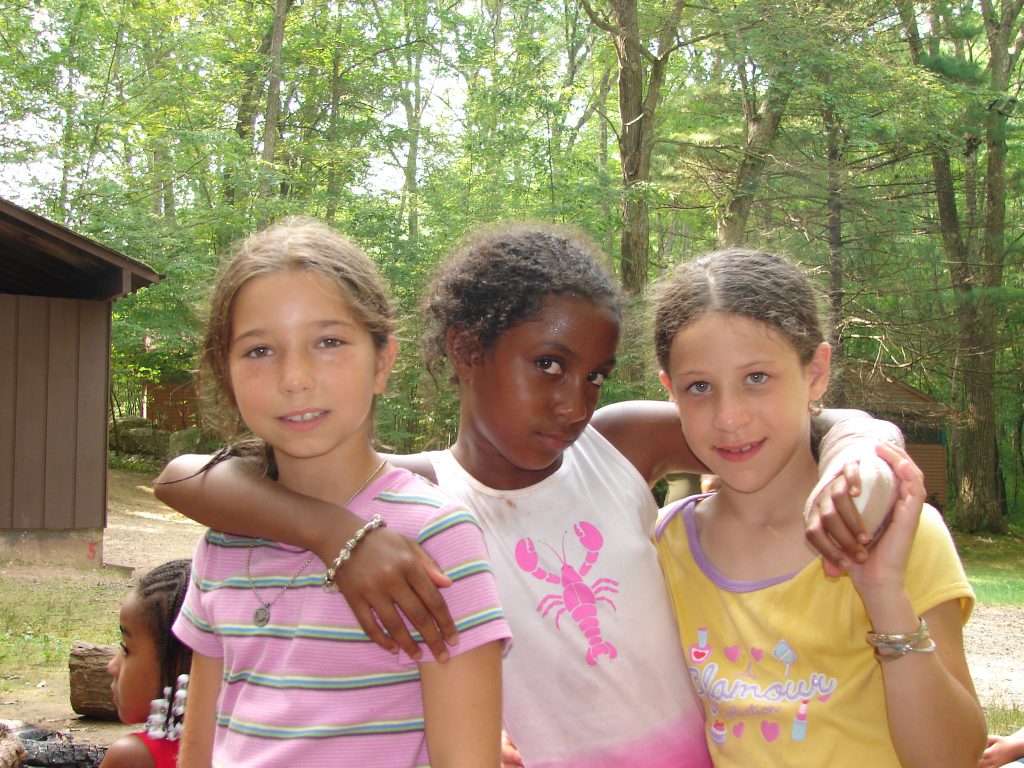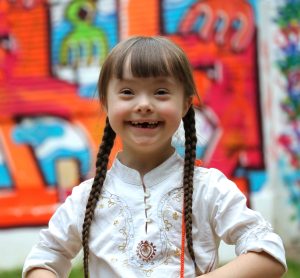2 Core Considerations for DAP
According to NAEYC, there are three core considerations for DAP:
- Commonality
- Individuality
- Context
Commonality

Development follows certain preset patterns. Children learn to sit up before they learn to walk. Babies babble before they learn to speak. Students learn to count before they learn to add. Across all children from all cultures, the early childhood years are a vital time of learning. The first few years of life provide a critical window of opportunity to enhance brain development and build the background knowledge children will need to be successful in school and life.
While the development of all children follows a predictable progression, learning occurs within a specific social and cultural context. While each context varies, the importance of this context remains a commonality. Consider play. All children in every culture play. However, the materials they use to play and the games they play vary. This is because children learn to play within their environmental contexts. If children watch their parents talk on the phone and use a laptop computer, these themes are likely to emerge in their play. If children watch their parents cook in the family restaurant and wait on customers, these themes are likely to emerge in their play.
Social and cultural context not only impacts what children learn; it impacts how children learn. Early interactions with parents and other caregivers influence children’s preference for noisy versus quiet activities. Context also shapes children’s preferences for playing independently or cooperatively, for taking the lead versus following the group. Context teaches children how they should interact with adults and classmates. A child who fails to conform to classroom expectation may be displaying behaviors expected by cultural context. Effective early childhood educators understand the impact that the social and cultural context has on children’s development.
Individuality

While development generally follows a predetermined progression, effective educators need to recognize that the development of each child is unique. Children vary in their experiences, interests, strengths, learning styles, and knowledge. “Development and learning also occur at varying rates from child to child and at uneven rates across different areas for each child”[1].
Instead of trying to get all the children in their classroom to the same place in their learning using the same methods for all, effective early childhood educators celebrate their children’s diversity. They use a strengths-based approach that allows them to view each child’s uniqueness as an asset. Instead of requiring quiet children to “speak up” and become more forceful, the teacher using a strengths-based approach will provide opportunities for these children to share their thoughts in small groups, through their artwork, and by actively listening to them when they decide to share. Instead of requiring very active children to “sit still” and become more passive, the teacher using a strengths-based approach will provide fidgets for active children to use during lessons and incorporate plenty of movement throughout the day to keep these children engaged.
Tiered instruction is an approach which can help you meet the needs of children at different skill levels. In tiered instruction, the teacher selects a skill to teach. The teacher then thinks of a related skill which is just a bit easier and a related skill which is just a bit more difficult. Using these levels, or tiers, of skills a variety of questions, activities, etc. can be developed to provide each child with the just right amount of challenge.
DAP in Practice
When I first learned about the importance of instruction which is individually appropriate, I was overwhelmed. How could I plan a lesson which is simultaneously appropriate for each of my 20 students? I’ve since found that tiering instruction makes this easier.
Within my classroom, I have children who do not yet have the prerequisite skills to begin to recognize letters, children who are beginning to recognize letters, and children who already know all the letters. By tiering instruction, I can provide activities within a single lesson to address these individual learning needs. Let’s say it’s October and I’m teaching “P” using a lesson themed around pumpkins. I give a “P” to the children who are still building prerequisite skills and ask them to find the same letter somewhere in the room. I ask the children who are just starting to identify letters to find the letter “P” somewhere in the room but without giving them a model to take with them. I ask the children who already know all the letters to find an object in the room which begins with the same sound as “pumpkin.” All the children can then report back to the class and share what they found.
Context
All development and learning are embedded in both personal cultural context and the broader cultural context in which we live. Sometimes thinking about culture leads teachers to make generalizations like, “My Hispanic children learn this way.” When children’s social and cultural contexts are considered, it has to be done with an emphasis on individuality. While there are certainly some experiences which are shared by all or most individuals of a certain gender, race, ethnicity, geography, socio-economic status, religion, etc. many of the experiences which shape children’s identities are not shared by everyone. Each child’s social and cultural context is unique and includes not only by broad issues like gender, race, and religion, but also include narrow issues like family composition, parental personality, family customs, and other influences which differ even among children within the same family.
Children are not the only ones to bring their individual social and cultural contexts to the classroom; teachers do, as well. It is important for teachers to reflect on the experiences they have had and the contexts they have experienced, particularly if they differ from those of the children they teach. Often the things that teachers assume “everyone knows” are culturally learned information. Do the children struggle to sit quietly and listen during circle? Maybe those behaviors aren’t valued in their culture. Do the students not seem to understand when you explain what characters in a story are using the story of The Three Little Pigs? Maybe that story is not part of their culture. “By recognizing that children’s experiences may vary by their social identities (for example, by race or ethnicity, language, gender, class, ability, family composition, and economic status, among others), with different and intersecting impacts on their development and learning, educators can make adaptations to affirm and support positive development of each child’s multiple social identities”[2]
DAP in Practice
The easiest way that I’ve learned to make sure that my classroom reflects the social and cultural contexts of my children is to recruit the children and their families to support my efforts. At the beginning of the year, and periodically throughout, I ask families to send in a couple of empty boxes and other containers from their favorite foods and put these in our housekeeping center. I ask families for donations of old clothes, particularly uniforms and special occasion clothing that is stained or outgrown, and stock our dress-up area with these. I also have families send in used magazines, calendars, and other reading material that they would usually throw away and put these in the class library, writing center, and math center. When we are learning about a particular letter, I ask the children to bring something from home that starts with that letter. This practice has taught me much about my children’s home lives. It has allowed me to create a classroom which reflects backgrounds of my diverse students. It has also helped expand the language and background knowledge of my children as we engage in conversations about objects and practices which are familiar to some but new to others.
Self-Reflection
To effectively apply developmentally appropriate practices in teaching and make decisions about children’s learning and development, a practitioner should:
- Have a strong knowledge and understanding of child development. (What can you expect a child to do?)
- Know individual children. (What interests a child? What in their life may be affecting their learning?)
- Be knowledgeable about the cultural and social expectations of the community that the children live in. (What skills and characteristics are valued by the community or are needed to fit into the community?)
- Be intentional in planning and practice. (Why do you do what you do?)
- Use effective teaching approaches and practices.(What are “best” practices? What regulations and standards must be met?)
- Scaffold children’s learning. (What is the learning sequence for skills and concepts? How can you build on experiences?)
- Use a variety of teaching methods. (What are the learning styles of the children? How can you present concepts for varied styles?)
- Recognize that approaches will vary and will change. (What works with your current group may not work with your next group or as the group grows. How can you change or adapt activities, the environment, and teaching?)
- Be a lifelong learner. (What inspires you? What do you want to know more about?[3]

